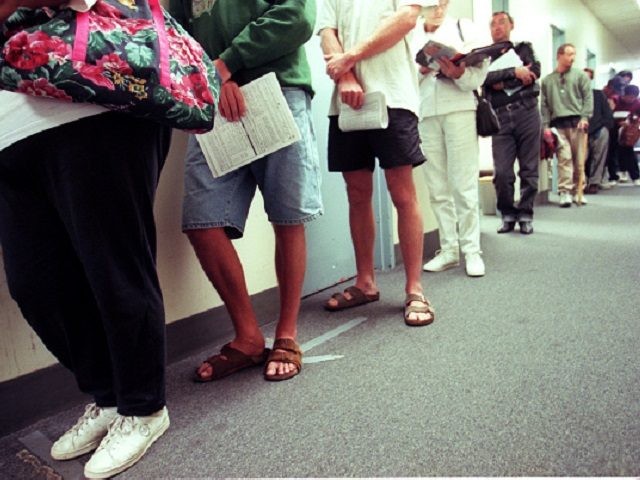The number of households on food stamps has dipped below 20 million for the first time in eight years, according to the latest data released by the U.S. Department of Agriculture (USDA).
The latest data from the USDA reveals that the number of households on food stamps in February 2018 dropped to 19,992,124—the first time it fell below 20 million since September 2010, when 19,979,385 households were enrolled in the Supplemental Nutrition Assistance Program (SNAP).
The USDA notes that not only is the number of households receiving food stamps at a record low level, but the number of people enrolled in food stamps has also gone down. From January to February of this year alone, overall food stamp enrollment dropped from 40,640,170 to 40,032,131.
The downward trend in enrollment has only continued over President Trump’s first year in office, keeping on pace with the stable decline in SNAP participation since 2013.
Under Trump, 2.2 million fewer people have discontinued their participation in SNAP, mainly due to the Trump administration’s attempts to reform the food stamp program by keeping the program’s cost down at the state and federal levels.
The USDA announced in March that it hired an “integrity officer” to bolster the administration’s efforts to prevent fraud in the country’s SNAP program and announced in February the rollout of its “Harvest Box” program to give food stamp recipients a box of food as part of their monthly benefits package.
Although the Trump administration is making it a priority to require food stamp recipients to work to receive benefits, the Senate version of the 2018 Farm Bill released Friday does not include the work requirements sought out by the Trump administration and the House Agriculture Committee.
The House’s version of the bill includes a provision that would require most adults ages 18 to 59 who enroll in food stamps to work, receive job training, or look for work under a case manager’s supervision.

COMMENTS
Please let us know if you're having issues with commenting.